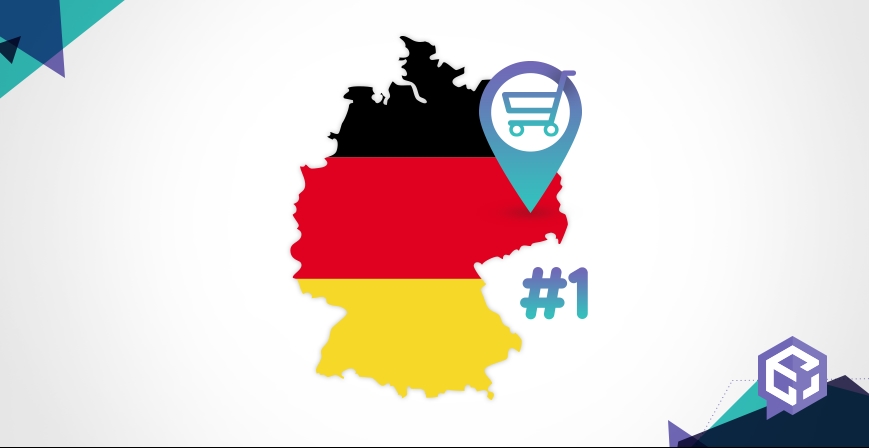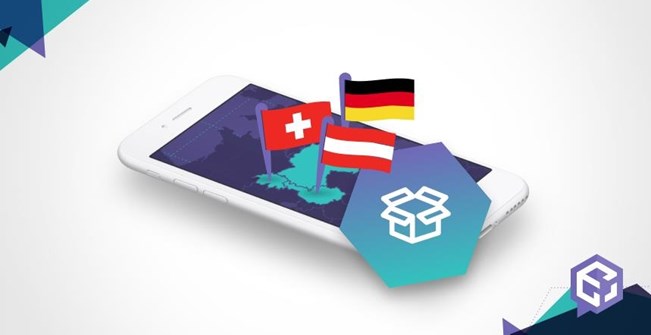The growth of online shopping in Germany has been growing regularly for several years. According to eCommerce News, the German ecommerce grew by 9.5% in 2017, which is € 85 billion, in 2018 it was about € 95 billion.
Typical German online customer
It should be noted that German customers expect high quality standards for the goods they buy. An average customer makes an online order of € 1157 per year, showing that they are willing to pay for quality.
Cross-border trade is very strong in Germany, according to Landmark Global, Germany is responsible for 15% of global cross-border sales, with more than half of eCommerce buyers buying goods outside Germany, especially from the UK, USA and China.
It is also interesting that customers outside major metropolitan areas have seen more growth in orders than densely populated areas in Germany. 60% of online sales in Germany come from communities with less than 50,000 inhabitants and demand is growing strongly in these places. In these communities, sales in 2017 increased by 17.1%, in 2018 it was 19% according to eMarketer. This undoubtedly talks about the lack of opportunities and choice when it comes to shopping outside big cities.
So if you use the Facebook and Google Ads campaigns, do not neglect targeting these areas.
Top sales categories:
* Clothing (approximately 16.7%)
* Consumer electronics (13%)
* Computers & Accessories (5.5%)
* Shoes (5.4%)
* Books (5.2%)
Marketplace
German customers buy online more often than other buyers in Europe. They mainly buy on the basis of trust, quality and, of course, price, while 43% of customers buy because of price rather than any relationship to the brand or online store. For this reason, portals like Amazon and Otto.de are thriving and represent the first logical step towards expanding companies to the German market.
Zalando.de is clearly the leader in fashion with an 18.3 percent increase in sales in 2018 in the entire DACH region (Germany, Austria, Switzerland).
Translations
Ensuring that your website is properly translated into German is essential to your ecommerce success in this market. In German, many words consist of a combination of two or three words, and marketing copywriters often use a dash to separate longer words on two lines. Native German speakers understand where a dash can be placed, so entrust your ecommerce project to the hands of professionals to act as a local online store on the German market, which will ultimately increase your conversions.
Through professional translators, Expandeco can ensure that every German translation is specifically tailored to the client's target region, whether it is a translation of websites, product descriptions, or promotional materials.
Customer support
German customer support is one of the most important parts of expansion to Germany and you should not wait for the last minute to resolve this issue. In Germany it is called "Servicewüste Deutschland", which describes a terrible customer support experience when a customer feels lost and that no one understands him. In this case, the trust in the online store is gone forever. Here are some tips to help you build a good customer support experience in Germany.
German consumers expect your customer service representative to speak flawless German in both spoken and written forms and to speak German without a regional dialect.
They also do not like to wait for anything, especially when they need something from you, be it information or help. That is why most companies in Germany have 80/20 rule, which means that 80% of calls must be answered within 20 seconds and customers will therefore expect that from you as well. However, this is not always realistic. For example, if too many customers are calling at the same time, the waiting time will be longer. But mostly after 3 minutes of waiting for their answer, 87% of customers end the call.
To best serve your customers, take the time to train your employees. Knowing how to communicate with your customers is one of the basic skills of quality customer support. If you are not within the reach of high-quality employees for German support, do not hesitate to use services of Expandeco, which has been dedicated to customer support not only in Germany for many years, and many well-known online stores use its services.
Marketing
The importance of Facebook as a source of website traffic continues to decline, as in other countries around the world, but users are most likely to learn about products on Facebook and Instagram. As for young generations (around 15 year old), WhatsApp is gaining significant popularity, especially as a source of communication - almost at the same level as writing classic SMS. You can't forget email marketing, which is growing year by year (771 million in 2017, more than 1 billion in 2018) and, more importantly, open rate is high if email campaigns are well managed .
Simply put, customers trust their customers. Do you remember how we said that marketplaces like Amazon are a good place to enter this market? Focus on good customer support and services, and customers will reward you with good reviews that will bring more trust to future customers and even more conversions.
The huge difference is in the use of social networks in terms of age groups, with 81% of online users aged 18 to 34 are on social networks, but only 39% of users aged 35 and over.
Most used social networks:
WhatsApp
Facebook
Instagram
Youtube
Snapchat
With the ever-increasing number of content available ever, the number of digital video watchers in Germany is breaking records, especially thanks to Youtube, which uses up to half of the population, making it a great marketing channel for the market. It has even left a television behind, whose advertising revenue has fallen below 25% of the total amount spent on advertising last year (which is the least since 2015), and this trend is likely to continue.






